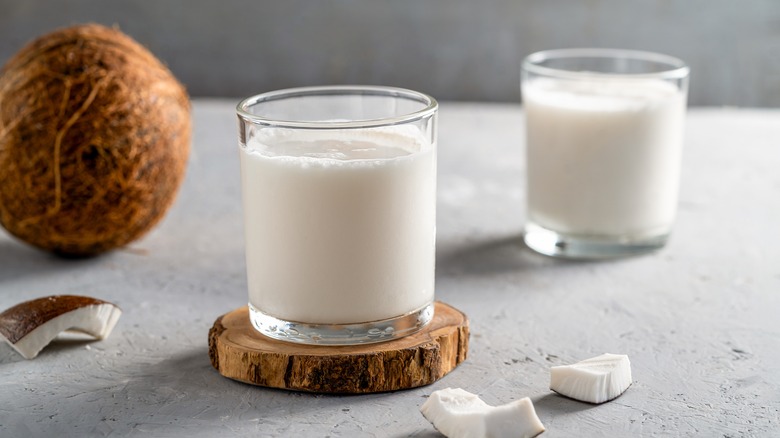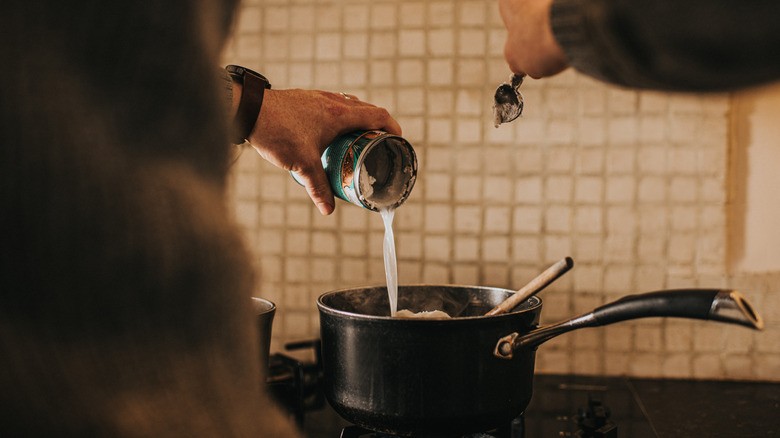How Is Coconut Milk Actually Made?
Coconut milk is a staple in cupboards around the world. Its creamy richness makes everything it's added to better, from flavorsome curries to decadent desserts. But how exactly does this magical tropical ingredient make its way from faraway coconut groves to your kitchen cupboard?
Well, it all starts inside mature coconuts. Unlike young coconuts, which are filled with clear coconut water — a natural hydration powerhouse — mature coconuts primarily contain solid, nutrient-dense coconut meat. The process to extract coconut milk begins by cracking open the hard shell, then the white flesh is carefully separated and grated into fine shreds. To draw out its natural oils, flavors, and nutrients, the grated coconut is first soaked in warm water. Then, the mixture is thoroughly squeezed, traditionally by hand or using a mechanical press, to produce the first, thickest liquid: coconut cream. A second pressing of the same mixture will give the thinner (yet equally flavorful) coconut milk.
And here's a handy tip: If a recipe calls for coconut cream, but you can't find it at your local store, don't sweat it. Grab a can of full-fat coconut milk instead, and stick it in the fridge. After chilling for about a day, you'll notice a thick, creamy layer has formed on top. That's your coconut cream! Simply scoop it off and use it however you like.
Making coconut milk at home
The commercial process of turning fresh coconuts into canned coconut milk is like some kind of tropical chemistry experiment. The milk has to be gently heated to 197 to 205 degrees Fahrenheit, and then emulsifiers and stabilizers are added to keep it smooth and prevent separation. But despite this technical procedure, making coconut milk at home is easier than it sounds. Simply start by grating fresh coconut flesh (or you can skip this step and use pre-shredded dry coconut), blend it with warm water, and then strain it through a fine sieve or muslin cloth. And just like that, you've got rich, creamy, coconut goodness. Blenders make this process a breeze compared to old-school hand-squeezing. And because your homemade version skips the preservatives, it's fresher and chemical-free. The only catch? It doesn't last long, so make sure to use it up fast.
Once you have coconut milk, the possibilities are endless. Keep it sweet by whipping it into a dairy-free whipped topping for desserts, make pumpkin pie dairy-free with a couple of coconut swaps, or blend it into smoothies for a creamy boost. Or use it in savory dishes like creamy pasta sauces, velvety mashed potatoes, or as the base for a comforting Swiss chard and coconut curry.


